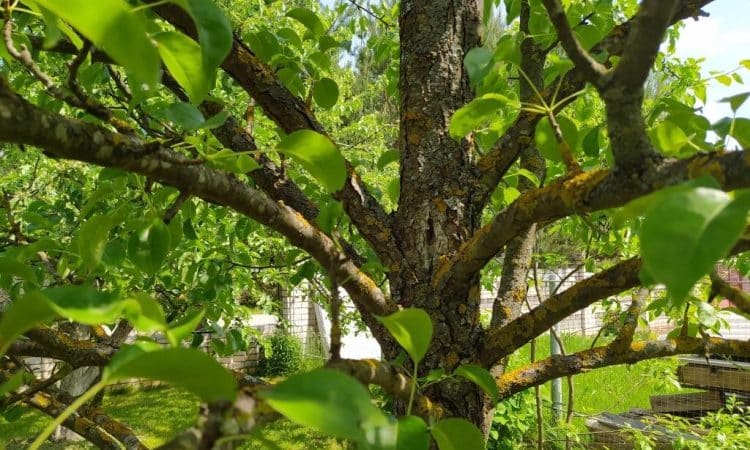Pruning apple trees in summer – a professional explains the benefits of summer pruning and why you should prune at the right time

Did you forget to prune your old apple tree in spring? Is it growing a lot of water weeds or is it otherwise overgreen? If so, you may well want to prune your tree in mid-summer, preferably after mid-July but before mid-August.
Summer is a good time for pruning in many respects.
After Midsummer, the trees’ growth potential is concentrated on the thickness of the trunk, among other things, rather than on leaves and shoots. At the same time, the (correctly) made pruning wounds are reduced. In addition, the tree’s defence mechanisms, which prevent the spread of diseases through wounds in the trunk, are very active in summer. The tree is therefore well equipped to defend itself against the stresses that pruning always causes.
Do not prune too early in the summer, as the tree may grow new shoots near the point of pruning. The shoots may not have time to die back before winter sets in. When a soft shoot dies in frosty weather, it forms a wound that allows fungal spores to enter the tree.
In principle, summer pruning does not cause additional growth, unlike spring pruning. For this reason, prune young and still growing apple trees in spring. For mature trees, either spring or summer pruning is suitable.
Many people shy away from summer pruning because some of the apple cores fall to the ground.
It can also be a challenge to see what to cut and what not to cut among the mass of leaves. However, it is worth pruning in summer if the tree’s growth rate needs to be curbed, for example if there are a lot of vigorous shoots on the tree. A lot of growth does not necessarily mean that the tree is doing well. A tree that has been pruned or damaged too much will try to grow strong shoots to quickly re-energise itself. But don’t cut off the shoots all at once, but thin them out over several summers.
When pruning, thin out upright shoots or shorten older upright branches at the outward growing branch. When cutting a branch from the trunk, be sure to cut outside the branch collar, as the collar will form new growth on the wound. Avoid removing large branches, as the tree is more resistant to removing several finger-thick branches than one wrist-thick one. You can also remove base and trunk branches in summer and dead branches at any time.

